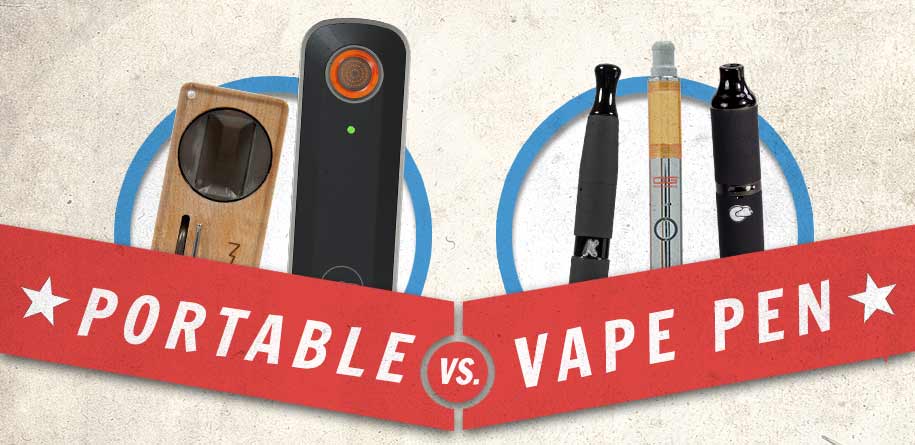There’s been some confusion over the difference between a vape pen and portable vaporizer. They’re different. But they’re alike enough in their handheld nature that people can’t always tell them apart. Like rollerskates and rollerblades, vaporizer pens and portable vapes get you where you’re going a little differently. One type of vaporizer is usually more discreet, while the other has more features and better vapor production.
It’s a Portable Vaporizer if…
It is handheld. Portable vaporizers are compact (though usually not as compact as vape pens). Portable vapes take many different shapes, from the sleek rectangular build of the Firefly 2+ to the wooden box design of the Magic Flight Launch Box.
It’s a Vape Pen if…
It is pen-shaped (no-brainer). Sort of like an office pen, but usually thicker. Vape pens are designed to be concealed. They hide in your hand, slip into your pocket, and when spotted, look similar enough to an ecigarette. In other words, a vape pen is generally more portable and discreet than a portable vaporizer.
But There’s More
The main distinguisher between a vape pen and portable vaporizer is design. Vape pens are more slender, and therefore a little more discreet and portable, than most portable vaporizers. But that difference in build also reflects in their performance, usability, and more.
Heating Systems
Because vape pens are slender, their heating systems are in most cases not as advanced as those found in portable vaporizers. Most vape pens have conduction heating systems, which means material is heated directly on the surface of the heating element (known as the atomizer). Conduction vaporizers therefore deliver slightly less smooth, smoky tasting vapor.
Portable vaporizers can feature either conduction or convection heating systems. Convection vaporizers deliver very pure vapor that is smoother and more flavorful because there’s no combustion. By blowing hot air through the heating chamber rather than cooking it directly on the heating element, conduction vapes minimize the amount of incineration involved in vaporization. The gist is that vape pens generally don’t produce the same level of vapor purity as portable vaporizers.
Portable Vaporizers Have More Features
Portable vaporizers can have a little more room for technology beneath their hoods. This affords them more capabilities than most vape pens. For example, the SideKick by 7th Floor has a spiralling insert that extends the vapor path so each hit is cool by the time it reaches your mouth. Some portable vaporizers like the Firefly 2 and Pax 3 can even be controlled via mobile app. These are features you’re not likely to find in a vape pen.
Vape Pens have Atomizers
Vape pens are generally designed for handling waxy oils. That means their atomizer (the heating chamber) can get spent a lot faster than the heating chambers of portable vaporizers that handle dry herb. This is a blessing and a curse. You have to replace your atomizers here and there. But you can also switch out different types of atomizers to get different vaping experiences from your wax concentrates. For example, you can choose between single or double rod, quartz or ceramic, and easily make that change by simply popping out the atomizer of your vape pen and attaching a different one.
It all comes down to what you vape, how you vape, and when you like to vape it. Vape pens are great for vaping wax concentrates on-the-fly in a very discreet manner. Portable vaporizers give you more options, with dry herb, wax or hybrid models, more advanced features, and better heating systems.




